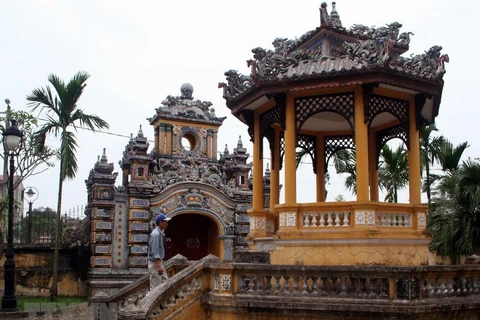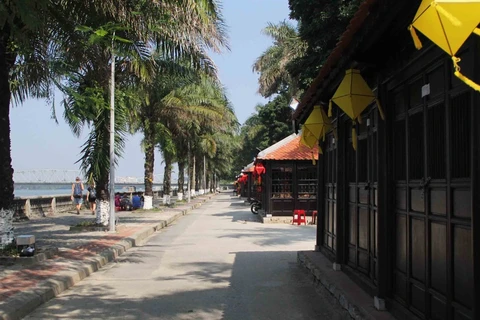Thua Thien-Hue (VNA) - Authorities of the central Hue city have announced plans to evacuate 4,200 families out of the citadel walls and buildings in an attempt to stop illegal lodging on relics.
The People’s Council of Thua Thien-Hue Province early this week approved the evacuation plan designed by the local People’s Committee.
Following the approved plan, the evacuation of 4,200 families living illegally on relics built during the Nguyen Dynasty (1802-1945) in the city will take place in two stages. The first starts this year and is expected to be complete in 2021, removing 2,938 families from on and around the citadel walls and relocating them.
The second stage will take place in 2022 to 2025, attempting to evacuate 1,263 households from the relics of Tinh Tam Lake, Hoc Hai Lake, Xa Tac Ritual Platform, the buildings of Kham Thien Giam, Xien Vo Tu, Tran Binh Dai and canals around the citadel.
The council approved a budget of 2.7 trillion VND (118 million USD) for evacuation compensation and 1.4 trillion VND (59 million USD) for resettlement. The total budget of more than 4 trillion VND comes from the central Government, local government and loans from the national treasury. The central Government will provide funds for evacuation compensation.
Construction on two sites of 9.9ha of land designated for resettlement is going on in Huong So, an outskirts ward of the city. A total 523 families will be removed this year.
Four decades ago, people began living in the relics, mainly the wall system running around the citadel. They occupied the walls in several ways. The majority of them broke part of the wall to make entrance alleys and built concrete structures on the top of the walls for housing. Others constructed temporary houses on top of the walls. Others made use of collapsed sections, clearing the debris for housing or demolishing the wall themselves to construct homes.
The upheaval after the American War and controversy over the role of the Nguyen Dynasty in Vietnamese history were the main causes to the illegal housing and lodging started since 1975. Another surge of illegal lodging taken place in 1999 after many locals lost their home and boats due to a historic flood occurred in the province.
Moving the families was first mooted in 1993, when all relics built by the dynasty in Hue were recognised as world cultural heritage sites by UNESCO.
Thai Cong Nguyen, former director of Hue Monuments Conservation Centre, the local government body managing all relics built by the dynasty in the province, said local authorities at that time ignored his proposal on evacuation due to the wrong perception of the monarchic role.
Researcher Phan Tan To added that conservation at that time was ignored. The researchers believed that if the evacuation was made in 1993, the cost for the work would be much lower and the relics would be well conserved as well.
Illegal residents on the relics in large number have caused damage and subsidence to the wall. Wastewater and farming activities on the top of the wall have also caused erosion.-VNA
























